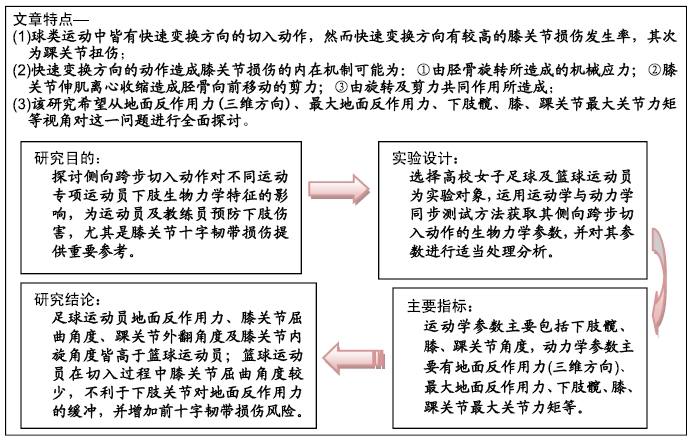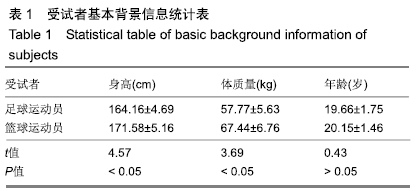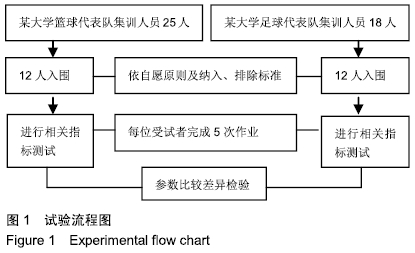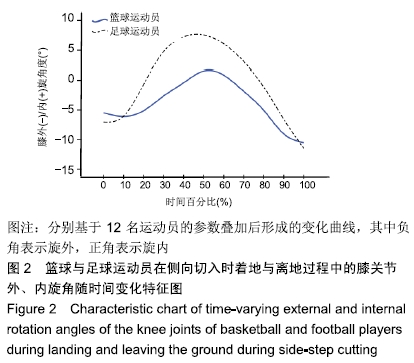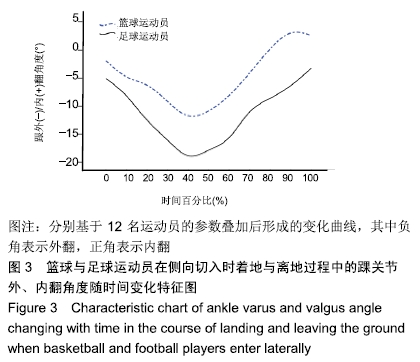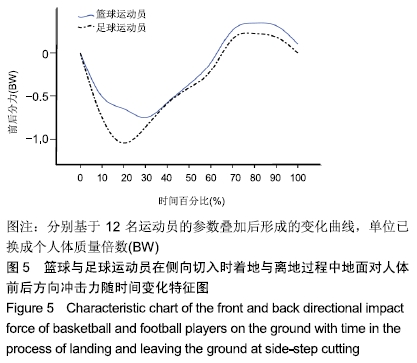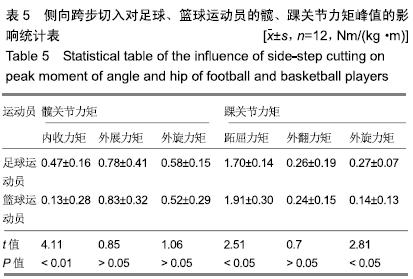[1] MICHEO W, HERNÁNDEZ L, SEDA C. Evaluation, management, rehabilitation, and prevention of anterior cruciate ligament injury: current concepts. PM R. 2010;2(10):935-944.
[2] 孔远航,林宝鹰,敖由,等.未成年人前十字韧带损伤的研究进展[J].现代医学,2019,47(2):199-203.
[3] EBERT JR, WEBSTER KE, EDWARDS PK, et al. Current perspectives of Australian therapists on rehabilitation and return to sport after anterior cruciate ligament reconstruction: A survey. Phys Ther Sport. 2019;35:139-145.
[4] PARWAIZ H, TEO AQ, SERVANT C. Anterior cruciate ligament injury: A persistently difficult diagnosis. Knee. 2016;23(1):116-120.
[5] 黄奕铭,张雅如.前十字韧带受伤后股四头肌萎缩的机制─周边神经的影响[J].中华体育季刊,2011,25(3):419-426.
[6] 黄奕铭,鸿宗颖,念裕祥,等.电刺激增加感觉输入之肌力训练对前十字韧带损伤者股四头肌自主活化与落地表现的影响[J].大专体育学刊,2011, 13(3):327-336.
[7] PATRAS K, ZIOGAS G, RISTANIS S, et al. ACL reconstructed patients with a BPTB graft present an impaired vastus lateralis neuromuscular response during high intensity running. J Sci Med Sport. 2010;13(6): 573-577.
[8] WANG H, KIA M, DICKIN DC. Influences of load carriage and physical activity history on tibia bone strain. J Sport Health Sci. 2019;8(5): 478-485.
[9] WRIGHT AA, DISCHIAVI SL, SMOLIGA JM, et al. Association of Lower Quarter Y-Balance Test with lower extremity injury in NCAA Division 1 athletes: an independent validation study. Physiotherapy. 2017;103(2):231-236.
[10] CASTILLO-LOZANO R, CUESTA-VARGAS AI. A comparison land-water environment of maximal voluntary isometric contraction during manual muscle testing through surface electromyography. BMC Sports Sci Med Rehabil. 2013;5(1):28.
[11] WETTERS NG, WEBER A, WUERZ TH, et al. Mechanism of Injury and Risk Factors for Anterior Cruciate Ligament Injury. Operative Techniques in Sports Medicine. 2016;24(1):2-6.
[12] MALINZAK RA, COLBY SM, KIRKENDALL DT, et al. A comparison of knee joint motion patterns between men and women in selected athletic tasks. Clin Biomech (Bristol, Avon). 2001;16(5):438-445.
[13] SERPELL BG, BALL NB, SCARVELL JM, et al. Muscle pre-activation strategies play a role in modulating Kvert for change of direction manoeuvres: an observational study. J Electromyogr Kinesiol. 2014; 24(5):704-710.
[14] PHELAN B, KING E, RICHTER C, et al. A comparison of anterior cruciate ligament - Return to sports after injury (ACL-RSI) scores of male athletes nine-months Post-ACL reconstruction with matched uninjured controls. Phys Ther Sport. 2019;38:179-183.
[15] BOGGESS G, MORGAN K, JOHNSON D, et al. Neuromuscular compensatory strategies at the trunk and lower limb are not resolved following an ACL reconstruction. Gait Posture. 2018;60:81-87.
[16] POLLARD CD, STEARNS KM, HAYES AT, et al. Altered lower extremity movement variability in female soccer players during side-step cutting after anterior cruciate ligament reconstruction. Am J Sports Med. 2015;43(2):460-465.
[17] MCLEAN SG, HUANG X, VAN DEN BOGERT AJ. Investigating isolated neuromuscular control contributions to non-contact anterior cruciate ligament injury risk via computer simulation methods. Clin Biomech (Bristol, Avon). 2008;23(7):926-936.
[18] COUPIER J, HAMOUDI S, TELESE-IZZI S, et al. A novel method for in-vivo evaluation of finger kinematics including definition of healthy motion patterns. Clin Biomech (Bristol, Avon). 2016;31:47-58.
[19] MCLEAN SG, LIPFERT SW, VAN DEN BOGERT AJ. Effect of gender and defensive opponent on the biomechanics of sidestep cutting. Med Sci Sports Exerc. 2004;36(6):1008-1016.
[20] SIGWARD SM, POLLARD CD, HAVENS KL, et al. Influence of sex and maturation on knee mechanics during side-step cutting. Med Sci Sports Exerc. 2012;44(8):1497-1503.
[21] NG CK, CHEN JY, YEH JZY, et al. Distal Femoral Rotation Correlates With Proximal Tibial Joint Line Obliquity: A Consideration for Kinematic Total Knee Arthroplasty. J Arthroplasty. 2018;33(6):1936-1944.
[22] POLLARD CD, SIGWARD SM, POWERS CM. Gender differences in hip joint kinematics and kinetics during side-step cutting maneuver. Clin J Sport Med. 2007;17(1):38-42.
[23] GREENE AJ, STUELCKEN MC, SMITH RM, et al. The effect of external ankle support on the kinematics and kinetics of the lower limb during a side step cutting task in netballers. BMC Sports Sci Med Rehabil. 2014;6(1):42.
[24] DAVIS RB, OUNPUU S, TYBURSKI D, et al. A gait analysis data collection and reduction technique. Human Movement Science. 1991;10(5): 575-587.
[25] 罗炯.斜坡超速跑训练对短跑运动技术影响的生物力学分析[J].北京体育大学学报,2010,33(6):123-128.
[26] MUNRO A, HERRINGTON L, COMFORT P. Comparison of landing knee valgus angle between female basketball and football athletes: possible implications for anterior cruciate ligament and patellofemoral joint injury rates. Phys Ther Sport. 2012;13(4):259-264.
[27] SABET S, LETAFATKAR A, EFTEKHARI F, et al. Trunk and hip control neuromuscular training to target inter limb asymmetry deficits associated with anterior cruciate ligament injury. Phys Ther Sport. 2019;38:71-79.
[28] ALENTORN-GELI E, MYER GD, SILVERS HJ, et al. Prevention of non-contact anterior cruciate ligament injuries in soccer players. Part 1: Mechanisms of injury and underlying risk factors. Knee Surg Sports Traumatol Arthrosc. 2009;17(7):705-729.
[29] SALEM HS, SHI WJ, TUCKER BS, et al. Contact Versus Noncontact Anterior Cruciate Ligament Injuries: Is Mechanism of Injury Predictive of Concomitant Knee Pathology? Arthroscopy. 2018;34(1):200-204.
[30] YU B, LIN CF, GARRETT WE. Lower extremity biomechanics during the landing of a stop-jump task. Clin Biomech (Bristol, Avon). 2006; 21(3):297-305.
[31] PETERSON JR, KRABAK BJ. Anterior cruciate ligament injury: mechanisms of injury and strategies for injury prevention. Phys Med Rehabil Clin N Am. 2014;25(4):813-828.
[32] XIE D, URABE Y, OCHIAI J, et al. Sidestep cutting maneuvers in female basketball players: stop phase poses greater risk for anterior cruciate ligament injury. Knee. 2013;20(2):85-89.
[33] ZASLOW TL, PACE JL, MUESKE NM, et al. Comparison of lateral shuffle and side-step cutting in young recreational athletes. Gait Posture. 2016;44:189-193.
[34] BOUTRIS N, BYRNE RA, DELGADO DA, et al. Is There an Association Between Noncontact Anterior Cruciate Ligament Injuries and Decreased Hip Internal Rotation or Radiographic Femoroacetabular Impingement? A Systematic Review. Arthroscopy. 2018;34(3):943-950.
[35] SHARIR R, RAFEEUDDIN R, STAES F, et al. Mapping current research trends on anterior cruciate ligament injury risk against the existing evidence: In vivo biomechanical risk factors. Clin Biomech (Bristol, Avon). 2016;37:34-43.
[36] READ PJ, OLIVER JL, MYER GD, et al. Altered landing mechanics are shown by male youth soccer players at different stages of maturation. Phys Ther Sport. 2018;33:48-53.
|
